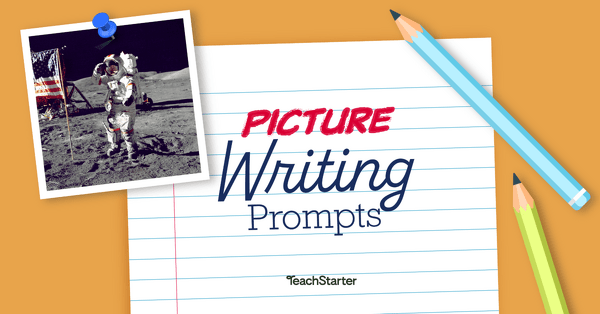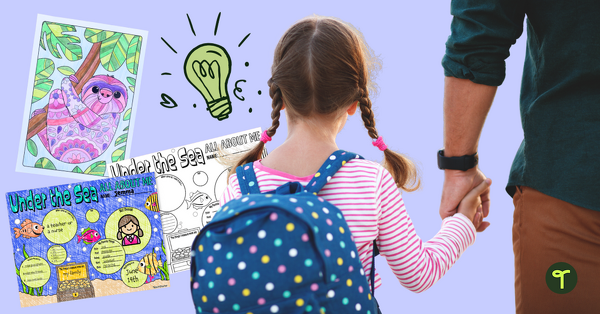Scaffolding learning has become a standard in education thanks to the support it gives students as they build up their knowledge. After all, we don’t expect construction workers to get to the top of a building without the aid of temporary supports. Why would we expect our young students to be able to work their way to the pinnacle of knowledge without a little help along the way?
The Teach Starter teacher team came up with some new scaffolding strategies and scaffolding teaching examples that you can implement in your classroom to create a more supportive learning environment!
Download printable graphic organizers now to scaffold classroom learning!
What Is Scaffolding in Simple Terms?
We apologize if we’re teaching you something you already know, but hey, we’re talking about creating supports for learning here, so we’d be remiss if we didn’t at least touch on what scaffolding means in education! Put in simple terms, scaffolding refers to the temporary support systems teachers put in place for students to help them to understand new concepts. That support can take many forms, such as providing a model or example, breaking a task down into smaller, more manageable steps, or providing feedback and guidance.
Essentially, when we scaffold lessons for students, learning is typically broken up into small parts or chunks, and students are given a structural tool as a mechanism for learning that “chunk.” Once a teacher determines the learning exists, the scaffold is then removed as students no longer need it.

The reason we touch on this is to establish that scaffolding is not the same as differentiation. The former is part of structuring learning. The latter is about modifying the educational process to meet a child’s different needs. Although providing scaffolding to struggling learners can be a part of differentiated learning, the two terms are not interchangeable.
Why Is Scaffolding Important in Teaching?
What’s more — there’s solid evidence that scaffolding in education works! Studies have shown that students who are required to use scaffolds show enhanced inquiry and performance vs. students in learning environments that don’t take advantage of the teaching tool. With the help of scaffolding, students build their knowledge and skills gradually, so that they can eventually complete the task or achieve the goal independently.
Scaffolding can help our students by providing them with the necessary support to overcome challenges and build their confidence, as well as by helping them to see the connections between new information and what they already know.
Got it? OK, let’s talk scaffolding ideas and examples that will really work in your classroom!
Scaffolding Teaching Strategies for the Classroom
Start With Important Vocabulary
Have you ever tried to read a text that’s so dense and full of jargon that it put you to sleep? This is a key mistake teachers can make too — sending kids right into the frustration station as they encounter word after word they just don’t understand! Defining key vocabulary and getting your students familiar with the words they’re about to hear will make learning new concepts less challenging.
Teach Starter Teacher Tip: Make sure you provide references so students can check back on the meanings of all these new words, giving them time to sink in.
For example, this free scaffold to help find students find the plot of a literary text spells out the meaning of key vocabulary words such as climax, rising action, and falling action. Anchor charts are also a great way to build a glossary with your students to refer back to as you move deeper into the lesson.
Draw on Past Lessons
The educational process in and of itself is a system of scaffolding if you think about it! You start in preschool or kindergarten with certain supports, which are removed when you get to first grade where you have new supports, and so on.
While you’re certainly not going to remove prior knowledge, beginning the lesson with a look at how new concepts relate to those already learned is a powerful mechanism for activating skills. For example, if you’re teaching a lesson on persuasive writing, you may reference books you’ve read in the classroom in which the protagonist used the powers of persuasion.
Provide Model Assignments
Ever performed a science experiment in front of the class before breaking students into groups or pairs to try it themselves? How about providing your students with examples of completed assignments from students you’ve had in your class in the past? These are both methods of scaffolding, providing your students with a structure they can copy as they dive into their own practice of the lesson.

Provide Organizers
Venn diagrams, flow charts, and graphic organizers all work to help students organize their knowledge in a logical way as well as break down big concepts into the smaller chunks that are at the heart of scaffolding. They allow students to make connections between the components of the lesson, deepening an understanding of the content.
Here are a few you can download now for free!
Think, Pair, Share
Often hearing what other classmates are asking or saying can open students’ minds up to a whole new way of thinking! With a “think, pair, share,” students are presented with a question and the teacher gives them silent time to think about their answer. This is, of course, the think portion!
Next students pair up with a partner, and the students share their answers with their partner. To ensure both parties speak, one partner is A, the other B.
As a teacher, you then direct your sets of “pairs.” For example, you might say “Partner A speaks first this time,” then after some time “OK switch, now Partner B speaks.”
This ensures all students are discussing an answer.
Often when teachers just call on a few students in a class discussion, not all students will think of an answer because they know they won’t raise their hand and get called on. Same with a group setting. Often times those quiet, shy students don’t speak in groups. However, when you do a think-pair-share, all students get involved and get a chance to work on those oral language skills.
Once they have spoken with pairs, you can have some partners share out with the whole class.
Provide Templates
In addition to completed versions, blank templates provide structure and let students know what you expect from them. They also make for fantastic classroom displays when everyone’s completed assignment has been turned in!
Here are a few you can download now:
- Blank Informative Text Writing Scaffold
- Blank Opinion Text Writing Scaffold
- Blank Scaffold Planning Sheets
Provide Manipulatives
Especially if you’re teaching a math lesson, the use of manipulatives helps make the material more visual and less abstract for your students. For example, using Base 10 blocks when students are learning to write numbers in expanded form or learning to decompose numbers provides a visual representation of the concept.
Bringing these concepts to life in a hands-on way can be done in individual ways too! Check out our printable manipulatives!
Establish Success Criteria and Learning Goals
When students know what it is you expect them to accomplish, it’s far easier to plan and predict, not to mention for them to self-assess their progress. As they internalize these learning intentions, your students can both make sense of challenging content and of what it is they need to do to meet the challenges in front of them.
Teach Starter Teacher Tip: Use measurable or active verbs like list, define, explain, and differentiate to provide students with a measure of knowledge.
Use Cues
Often the question for students is, “where do I start?” Cues help answer that question, providing clear starting points for students to move forward with the application of their developing knowledge.

widget
Picture Writing Prompts
These picture writing prompts are a great way to help students develop their writing skills. A visual writing prompt can be generated at random or chosen specifically.

teaching resource
Animal Poetry Task Cards
Get your students writing simple animal poetry with this set of 12 poetry prompt task cards.
Practice, Practice, Practice
It isn’t just how you get to Carnegie Hall. It’s how students get the hang of new things!
Whether you’re sending them home with homework that requires the use of a new concept or sending students off to centers to work together on related activities, it’s important to stress that this is a learning experience and perfection is not expected.
The key to making this an effective scaffolding tool is to have established a growth mindset in your classroom wherein learning is about discovering — not about getting it right the first time.









Comments